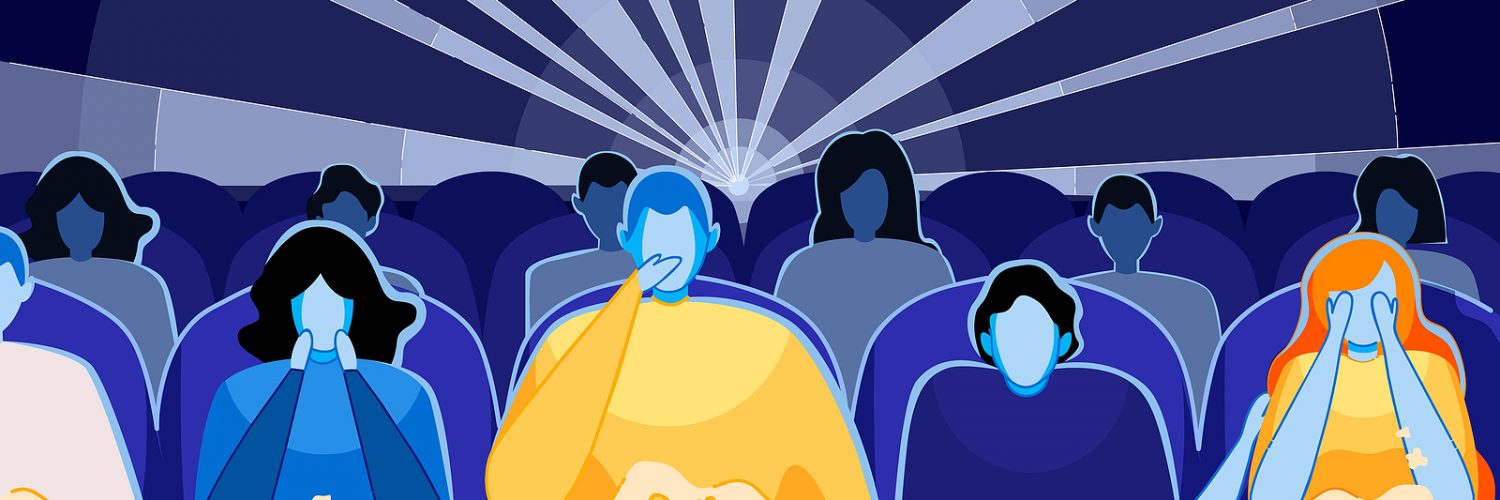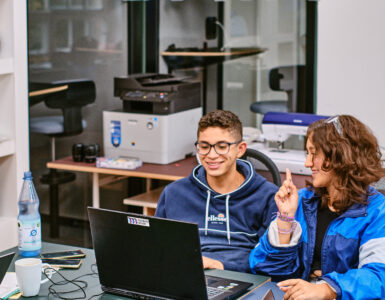Imagine a method that lets students see, hear and experience a foreign language in action. Suppose that source was available in every major European language, and that teachers could use it to provide students, in advance, with 2-3 hours homework consisting of reading, listening, vocabulary and comprehension exercises. Now picture a classroom in which students turn up twenty minutes early, in order to check homework, before watching, reading, and listening to authentic language on a big screen, and then remaining behind to talk about the experience for 30 minutes in pairs.
We don’t need to imagine this magical source, as it already exists, but perhaps teachers are a little unsure of how to use it. This article looks at three possible scenarios for using film in language learning. But first, a note on copyright law.
In 2015, representatives from CUMEDIAE, UAB, AEDE and others presented a report Showing Films and Other Audiovisual Content in European Schools Obstacles and Best Practices to the European Commission. The aim was to provide the Commission with reliable data and analyses on the educational use of audiovisual content in schools.
As a result of this report and many other efforts in promoting better access to resources that were until now restricted for use in education because of copyright laws, the European Parliament has voted the Directive (EU) 2019/790 of 17 April 2019 on Copyright and Related Rights in the Digital Single Market, and consequently the EU legislator has obliged Member States to provide for an exception for the digital use of protected works for illustration in lessons.
In short, teachers will be allowed to show parts of any film in class “…for the sole purpose of illustration for teaching or scientific research, as long as the source, including the author’s name, is indicated, unless this turns out to be impossible and to the extent justified by the non commercial purpose to be achieved” (Article 5), Teachers might need a license to show feature length films. However, a yearly license is not necessarily expensive (depending on which body you deal with) I obtained mine from an international body that represents every major Hollywood studio. The license covers thousands of movies dating back to the 1940s.
1: Film in a traditional Classroom
In a traditional classroom teachers are limited by time and number of students. Generally it’s not possible to show more that 3-5 minutes of video. Ideal sources are news clips, film trailers, short films (vimeo) and youtube material. In a typical 90 minutes students can be guided through a range of activities including reading, previewing, comprehension questions, listening, vocabulary exercises and discussion questions.
2: Film in a flipped Classroom
Flipped learning removes the time limit that classrooms place on learning. Students are provided with learning material in advance. This subtle, but radical, change offers many benefits, two of which are time and material. Students engage material at their own pace. They have as much time as they need to complete reading, comprehension, listening and vocabulary exercises. If necessary, they can pause and rewind video to check for comprehension. And because there is no time restriction, teachers can offer much more comprehensive and authentic material–especially video. The most significant change is that class time can be wholly dedicated to active learning such as presentations and discussions around themes raised in the film.
3: A Weekly Film Club
Feature length films are the richest source of authentic language available to learners. No other medium can match the incredible array it offers. The simple process of watching movies exposes learners to dialect, phrasing, vocabulary, slang, idioms, expressions, articulation, pronunciation, tempo and more. And every aspect is presented in a visual, audible and emotional context. The ability to make us feel, and care for characters – even those speaking a foreign language – is probably film’s greatest asset in the language classroom.
However, one unfortunate side affect in this love affair is that mainstream movies tend to nurture passivity – entertainment has precedence . Of course enjoyment, which film undoubtedly offers, should be a big part of learning, but just as literature didn’t start with J.K.Rowling, neither did film. The first task in establishing a successful film club is to help students understand that the magic of movies is nothing more that brilliant artifice.
In 2010, my first English language film club had just 8 students. This year, before the onset of Covid-19, I had over 120. Through trial and error, and listening to the students, I discovered that the key to making film accessible for B1 learners (and above) is to provide them with language in advance via a weekly Film Guide
The film guide for Hysteria contains a plot, a list of major characters, over 8,000 words of dialogue, 3 pages of gap-fill exercises, 24 word idiom/phrasal verb exercise, 2 pages of background information and 50 minutes of listening exercises. Students never complain about having too much homework.
End Credits
From primary education onwards , almost all pupils learn English in the vast majority of EU Member States. In 2017, 95 % of pupils in secondary education were learning English as a foreign language text missing. No other European language receives as much exposure with most pupils studying English for at least six years. However, even with all that focus, in Germany alone, more that 400,000 people registered on English language courses at the Volkshochschule (adult education) in 2017 text missing (see page 46 Englisch Belegungen). For millions of Europeans, the text based approach to learning language is failing them. Fortunately we don’t need to image or go looking far for a solution. European cinema, responsible for some of the greatest films ever made, offers students an unsurpassed wealth of riches in almost any language they choose.
In today’s hyper visual world, isn’t it time that the incredible works of art created by Europe’s visionary directors– Varda, Malle, Truffaut, Buñuel, Almodóvar, Berlanga, Fellini, Zeffirelli, De Sica, von Trier, Hastrup, Andersson, Bergman, Herzog, Wenders, Haneke, etc. were given the same prominence in language learning as the great novelists.

Author
Frank Mc Girr
Freelance English teacher working in adult education at the Volkshochschule in Bremen, Germany.














